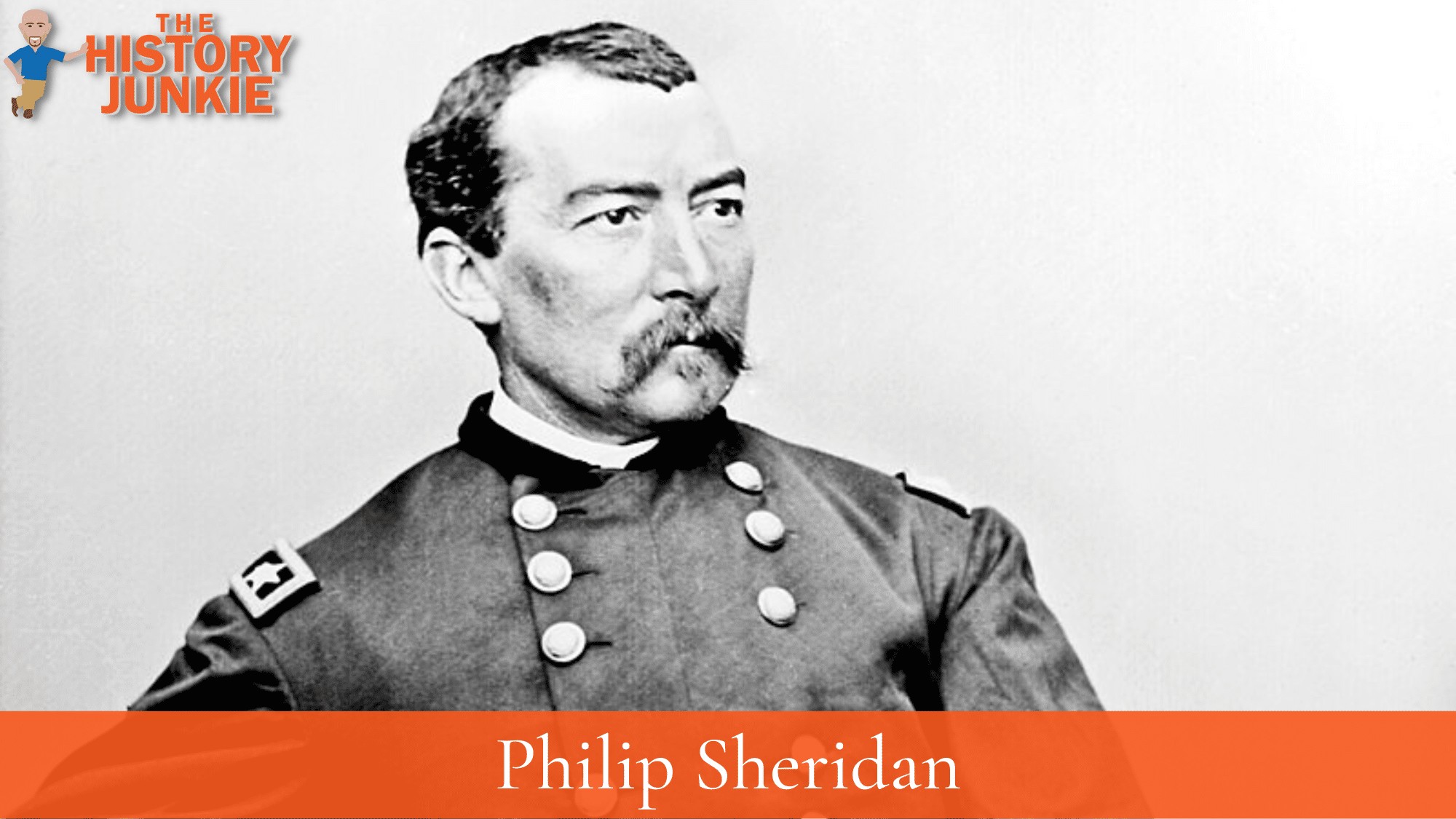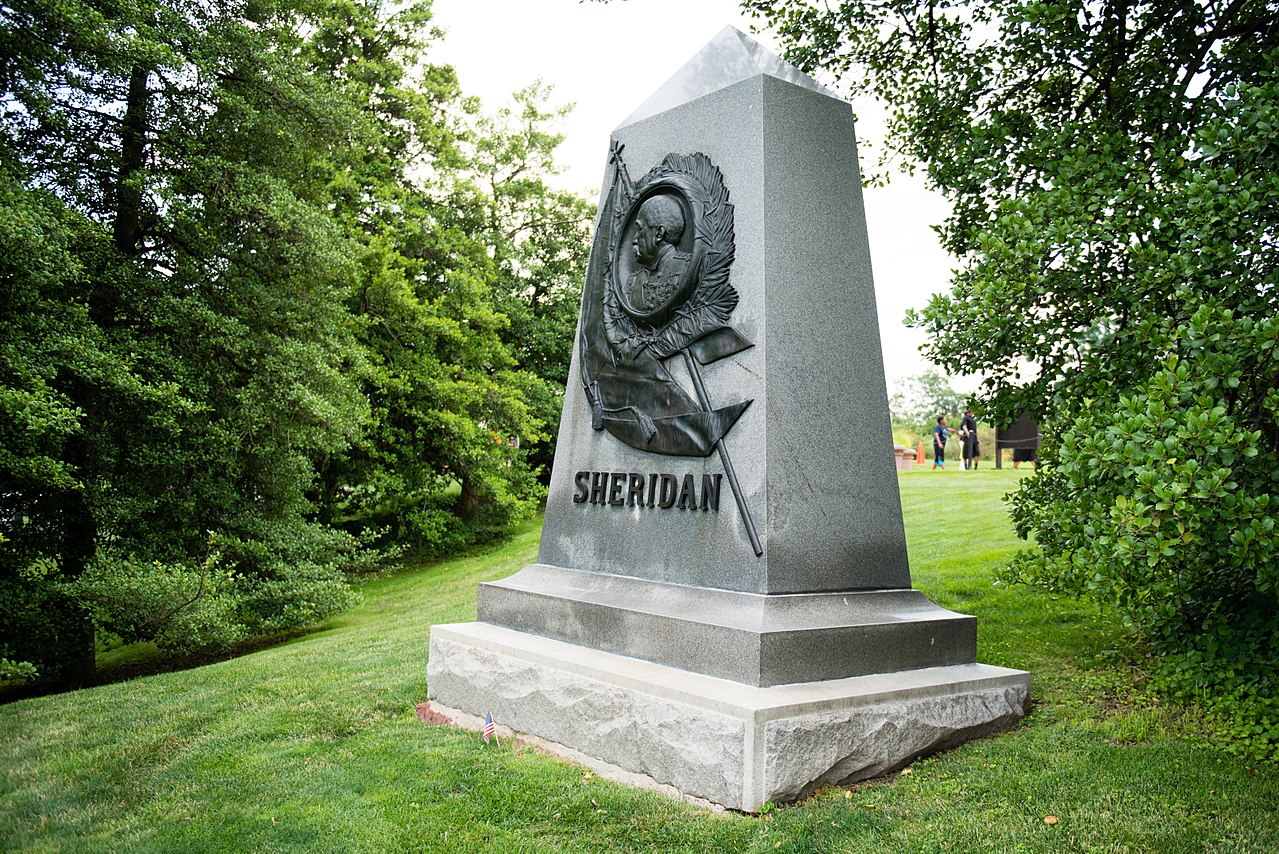Philip Sheridan rose to fame toward the end of the Civil War when he, along with Ulysses S. Grant and William Sherman, took the war to the Confederacy.

He was a career United States Army officer and a Union general in the Civil War. His career was noted for his rapid rise to major general and his close association with General-in-chief Ulysses S. Grant, who transferred Sheridan from command of an infantry division in the Western Theater to lead the Cavalry Corps of the Army of the Potomac in the East.
Jump to:
In 1864, he defeated Confederate forces under General Jubal Early in the Shenandoah Valley, and his destruction of the economic infrastructure of the Valley, called "The Burning" by residents, was one of the first uses of scorched-earth tactics in the war.
In 1865, his cavalry pursued Gen. Robert E. Lee and was instrumental in forcing his surrender at Appomattox Courthouse.
Sheridan fought in later years in the Indian Wars of the Great Plains. He was instrumental in the development and protection of Yellowstone National Park, both as a soldier and a private citizen.
In 1883, Sheridan was appointed general-in-chief of the U.S. Army, and in 1888, he was promoted to the rank of General of the Army during the term of President Grover Cleveland.
In 1888, Sheridan suffered a series of massive heart attacks two months after sending his memoirs to the publisher.
His family moved him from the heat of Washington to his summer cottage in the Nonquitt enclave of Dartmouth, Massachusetts, where he died of heart failure on August 5, 1888.
Read Article: Famous Civil War Generals

Family Overview
Philip Sheridan came from a hard-working immigrant family. They moved around a bit until they settled in Somerset, Ohio. He was raised to be humble, and despite his success, his parents never favored him over the other children. They celebrated them all equally.
He married Irene Rucker, who was half his age. She was familiar with military personnel and was known for her beauty.
The couple had four children. He had three daughters who lived to an advanced age, but none of them married, and they all lived with each other in Washington, D.C.
His son also died young in 1918, and he was the youngest sibling.
Family Tree Chart
Parents:
John Sheridan (1801 - 1873) - He was an Irish immigrant who settled in Ohio. He and his wife would have six children. He worked on the railroad and canal, which kept him away from home often.
Mary Meenagh (1801 - 1888) - She was also an Irish immigrant who migrated to the United States with her husband. She died the same year as her son Philip.
Spouse:
Irene Rucker (1856 - 1938) - She was born in the New Mexico Territory and was familiar with the military. She married Philip and was half his age. the two had four children together.
Children:
Mary Sheridan (1876 - 1959) - She never married and lived with her two twin sisters in Washington D. C. She served on the Red Cross during World War 1.
Irene Sheridan (1877 - 1964) - She never married and lived into her 80s. She is buried in Arlington Cemetery with her parents.
Louise Sheridan (1877 - 1969) - She never married and lived a long life. She was buried in Arlington Cemetery with her parents.
Philip Sheridan Jr. (1880 - 1918) - He was a graduate of West Point and served during the Spanish-American War under Theodore Roosevelt. He died of a sudden heart attack at the age of 37.
Siblings:
Patrick H. Sheridan (1828 - 1851) - He was three years old when his parents came over from Ireland. He never married and died a week prior to his brother Philip's suspension from West Point.
Rosa Sheridan (1829 - 1831) - She was two years old when her parents made the trip to America. She died while at sea and was buried at sea.
Mary Sheridan Wilson (1834 - 1868) - The nearest in age to her famous brother, she was his only surviving sister and the most frequent of his correspondents during his years as a West Point cadet. During the third year of the Civil War, when Mary was 29, she married John Wilson in a wedding ceremony that took place on August 16, 1863. The couple's marriage ended with Mary's death less than five years later, and their only child, an infant son, is interred here with her
John L. Sheridan (1837 - 1898) - He fought in the Civil War as a private and, after the war, became an attorney. It was said by his mother that he was the smartest of her children, and she was just as proud of him as a private than of his brother's accomplishments. He married and had two daughters.
Michael Vincent Sheridan (1840 - 1918) - He entered military service as an Aide-de-Camp to Lieutenant General Phil Sheridan on 1 July 1862. He was promoted to Captain, 2nd US Missouri Volunteers, on 7 Sept 1863 and was moved to Aide-de-Camp from 18 May 1864 to 1 August 1866. In numerous engagements during the Civil War, he was brevetted to Major and Lt. Colonel on 2 March 1867 for services at Fisher Hill. He continued in the military after the war until 1902, when he retired.
